Brittle-leaved Saxifrage, Fleshy-leaved Saxifrage, Peak Saxifrage, Swamp Saxifrage
Micranthes fragosa
Synonyms: Saxifraga claytoniifolia, Saxifraga fragosa, Saxifraga fragosa ssp. claytoniaefolia, Saxifraga fragosa ssp. claytoniifolia, Saxifraga fragosa var. fragosa, Saxifraga
integrifolia var. claytoniaefolia, Saxifraga integrifolia var. claytoniifolia, Saxifraga nidifica, Saxifraga nidifica var. claytoniifolia

The photo above shows a close-up of the flowers of peak saxifrage as seen in moist soils along the lower sections of The Dalles Mt. Road to the north of The Dalles, OR............March 17, 2007. The inflorescence begins very tight, but with age, some individuals can be widely branched.
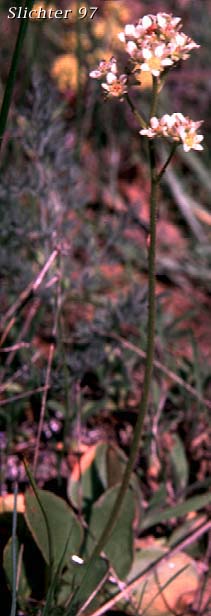 The similar Saxifraga integrifolia var. integrifolia from Catherine Creek, Major Creek
Plateau, Columbia River Gorge, Washington.........March 30, 1991.
The similar Saxifraga integrifolia var. integrifolia from Catherine Creek, Major Creek
Plateau, Columbia River Gorge, Washington.........March 30, 1991.
Characteristics:
Northwestern saxifrage is a perennial with a single erect stem,
from 10-30 cm high arising from a cluster of basal leaves. The stems lack leaves
and are unbranched (except as part of the inflorescence). The leaves are variable
according to the variety, but are generally have elliptic, lanceolate, rhombic-ovate
or triangular blades with short to long petioles The thick blade is usually
2-4 cm in length, but may occasionally reach as long as 12 cm. The width ranges
from 1-2 cm wide but on occasion, may be as much as 6 cm. The leaf margins are
usually entire, but occasionally may be lightly toothed.
The inflorescence is a cymose-panicle. The 5 petals may be white,
yellowish, or greenish-white, or they may be absent. They range from 2-3 mm
long and ovate, elliptic, or obovate in shape..
Varieties (Several of these have recently become individual
species. Nomenclature updates are from the USDA Plants Website: March/11/2006):
var. integrifolia (Now
S. integrifolia) - Petals are white, 1.5-3 mm long, ovate to obovate
in shape. Leaf blades narrowly rhombic to ovate-lanceolate, narrowed gradually
to broad petioles equal to or usually shorter than the blades. Found west of
the Cascades from British Columbia south to Lincoln County OR, and east along
the Columbia River Gorge to Wasco County, OR.
variety claytoniaefolia (Now S. nidifica var.
claytoniifolia) - Petals are white, 1.5-3 mm long, ovate to obovate
in shape. Leaves broadly deltoid to ovate or lanceolate, narrowed abruptly to
thin petioles often as long or longer than the blades (See photo at tope of
page.) . The leaf surfaces are usually smooth. Found east of the Cascade Mts.
in Washington and Oregon from Okanogan County south to south-central Oregon,
and down the Columbia River Gorge to the Willamette Valley. To the east, it
may be found in southeastern Washington, northeastern Oregon, and western Idaho.
variety
apetala (Now S. apetala) - Flowers have no petals. Inflorescence
is tightly packed into a dense cluster. No lower branches of the inflorescence
are visible on the stem. Anthers yellow. The leaves are rhombic-lanceolate,
narrowing gradually to wide petioles that are shorter than the blades. Found
east of the Cascade Mts. in Washington from Okanogan County to Yakima County.
variety leptopetala (Now S. nidifica var. nidifica)
- The flowers are yellowish or greenish-white, often with purple or pink
coloration. Petals 1-2.5 mm long, spatulate or oblanceolate in shape, 2.5-3.5
times longer than wide. The inflorescence is open, the lower branches of the
inflorescence are 1-2 cm apart. Anthers orange. The leaves are rhombic-lanceolate,
narrowing gradually to wide petioles that are shorter than the blades. Found
from southern British Columbia south along the east side of the Cascades to
northern Oregon. It may be found west into the Columbia River Gorge and to the
east into eastern Washington, western Idaho, and possibly as far east as western
Montana.
variety
columbiana (Now S. nidifica var. nidifica) - The
flowers are yellowish or greenish-white, often with purple or pink coloration.
Petals 1-2.5 mm long, spatulate or oblanceolate in shape, 2.5-3.5 times longer
than wide. Leaves mostly rhombic-ovate, narrowed gradually to thin petioles
up to as long as the blade (See photo below.). Found in the Blue and Wallowa
mountains of southeast Washington and northeastern Oregon, central and southwestern
Idaho, northern Nevada, and northeastern California.
Habitat:
Northwestern saxifrage may be found on prairies, grassy slopes,
and meadows which are seasonally moist in the spring but dry in the summer.
Range:
Northwestern saxifrage may be found from British Columbia south
to California and east to central Idaho and Nevada.
In the Columbia River Gorge, it may be found between the elevations
of 100'-3400' from near Crown Point in the west to the eastern portion of the
Gorge.
 -
- 
Close-up sideviews of the inflorescence and of a flower cluster of peak saxifrage as seen in moist soils along the lower sections of The Dalles Mt. Road to the north of The Dalles, OR..........March 17, 2007. The inflorescence begins very tight, but with age, some individuals can be widely branched. Note the numerous reddish, gland-tipped hairs along the stem.
 -
- 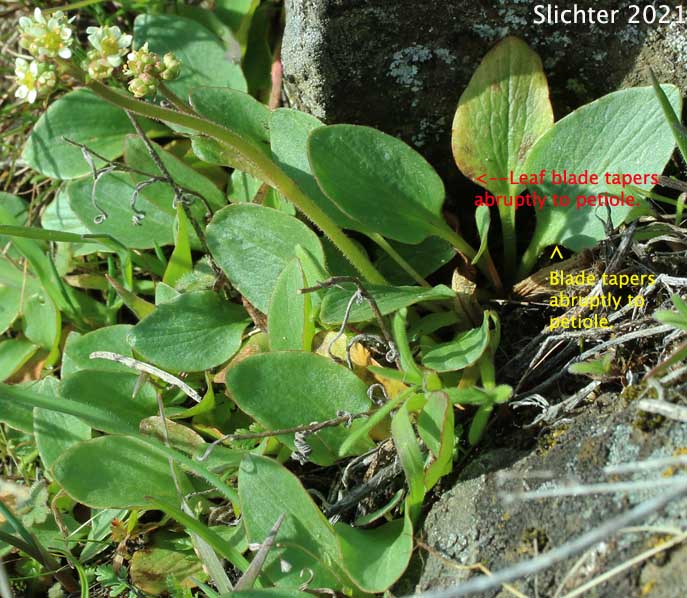
Basal leaves of peak saxifrage with their distinctive spade-shaped blades. Photographed in vernall moist drainages on USFS lands on the south side of Sevenmile Hill near The Dalles......March 4, 2021.
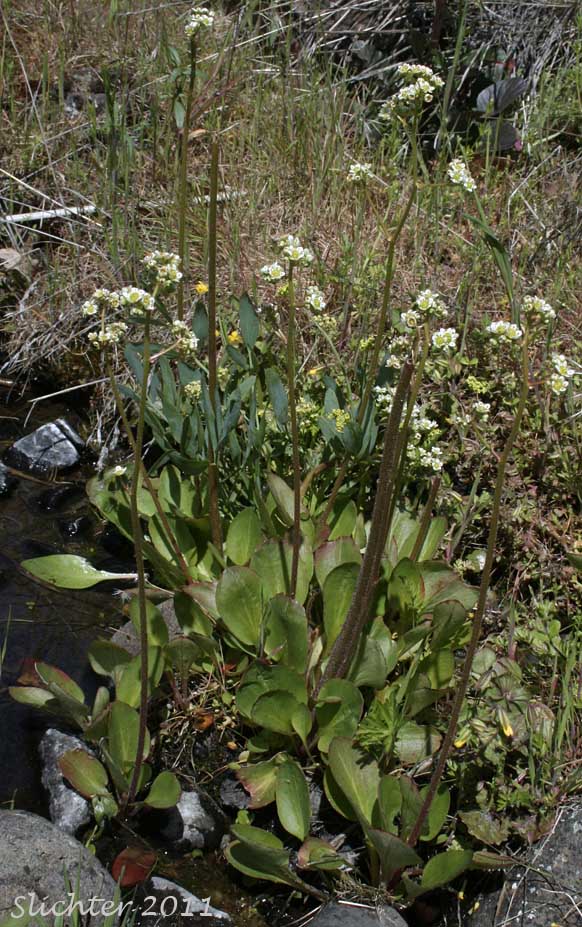 -
- 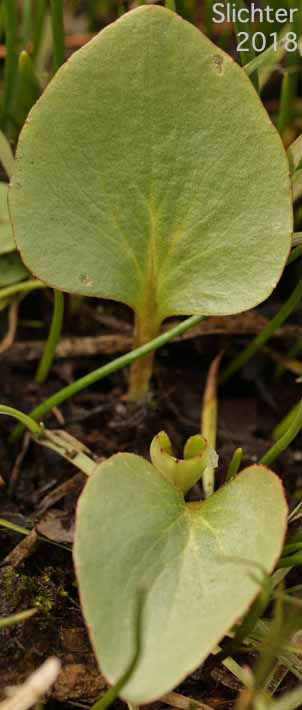
Peak saxifrage as seen at left along Eight Mile Creek between Washington Highway SR14 and The Dalles Mt. Road in the Columbia Hills State Park.........May 7, 2011. The photo at right shows the distinctive spade-shaped basal leaves (with the base of the blade abruptly tapered in to the petiole) of brittle-leaved saxifrage as seen at Catherine Creek, Columbia River Gorge.......February 27, 2018.
 -
- 
The photo at left shows a close-up of a leaf of peak saxifrage as seen in moist soils along the lower sections of The Dalles Mt. Road to the north of The Dalles, OR..........March 17, 2007. The photo at right shows the basal leaves of peak saxifrage as seen along the Haul Road on the west bank of the Klickitat River about two miles upstream from the Twin Bridges crossing of the Klickitat River on Highway 142.........November 12, 2016.
 -
-  -
-  -
- 
Peak saxifrage as seen in a vernally moist swale on the south side of Marsh Hill east of Mosier, Oregon.........March 27, 2015.
 -
- 
The photo at left shows a close-up view of the
opening inflorescence of northwestern saxifrage as seen along the Three Bench
Loop Trail above Doug's Beach (east of Lyle, WA) in the Columbia River Gorge...........February
12, 2006. Note the numerous reddish, gland-tipped hairs on the upper scape and
within the inflorescence.
The photo at right shows brittle-leaved saxifrage in bloom on vernally moist slopes above the Crawford Oaks Trailhead at Columbia Hills Historical State Park.....March 24, 2022.
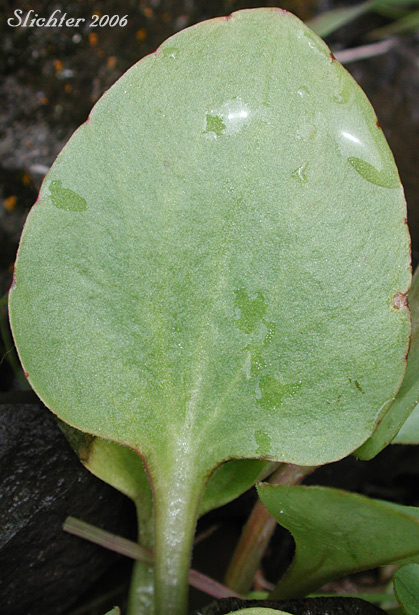 -
- 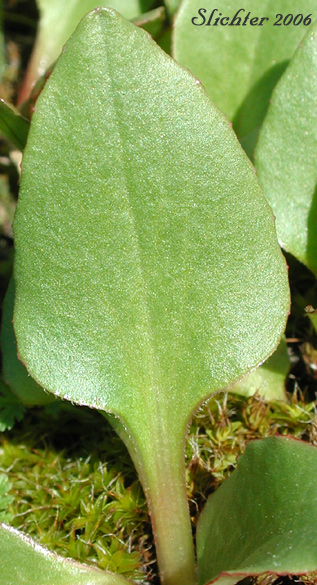 -
- 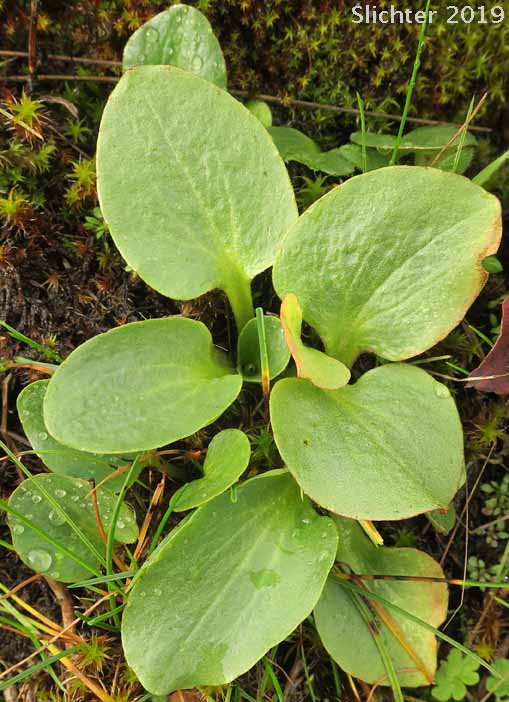
Basal leaves of peak saxifrage as seen at left and center from the eastern ascent
of the 3 Bench Loop above Doug's Beach, WA State Road #14, MP 79..........March
11, 2006. This is the former variety claytoniaefolia, as the glabrous leaf blade
is deltoid or triangular in shape and it tapers abruptly to the thick petiole. The photo at right shows basal leaf rosettes of peak saxifrage as seen from trails at the Labyrinth and Coyote Wall, Columbia River Gorge......January 19, 2019.
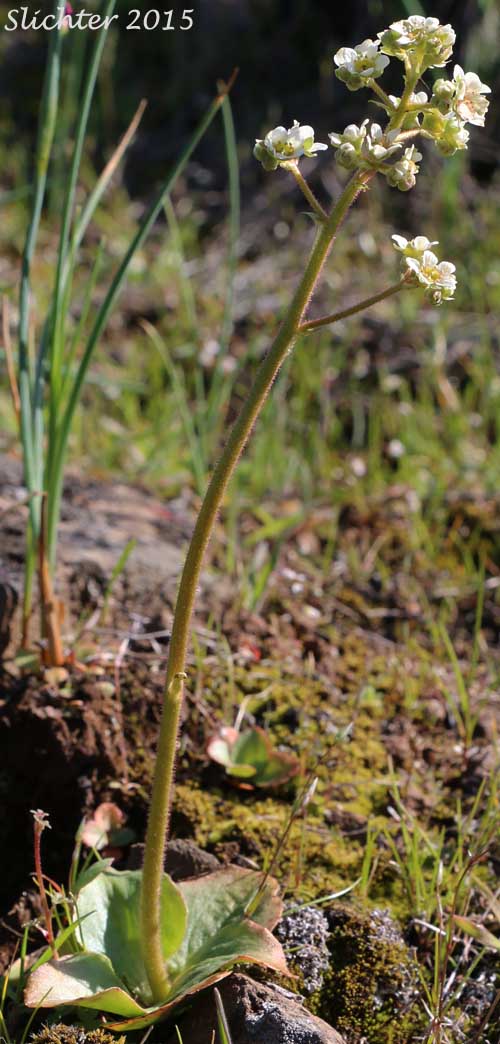 -
-  -
- 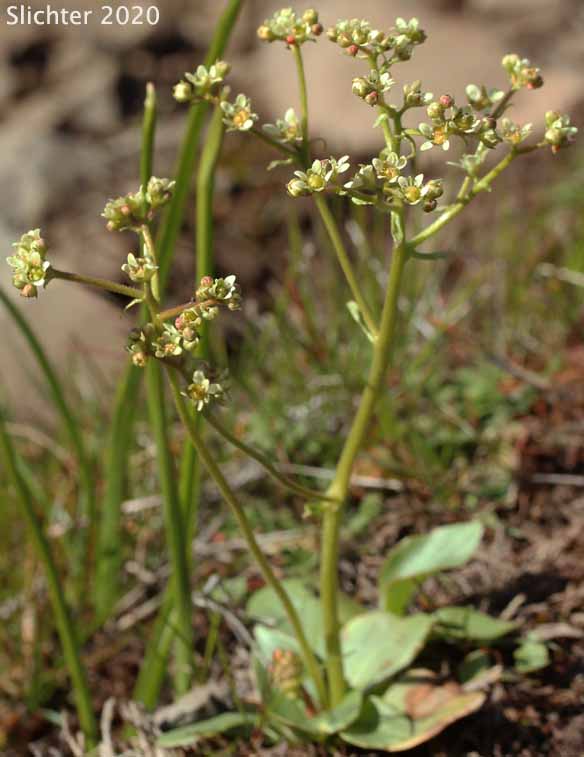
Peak saxifrage as seen at left and center beginning to bloom in a vernally moist swale about 200 meters uphill from the Crawford Oaks trailhead at Columbia Hills State Park.........March 3, 2015. The photo at right shows an early blooming peak saxifrage in bloom at Catherine Creek.....February 18, 2020.
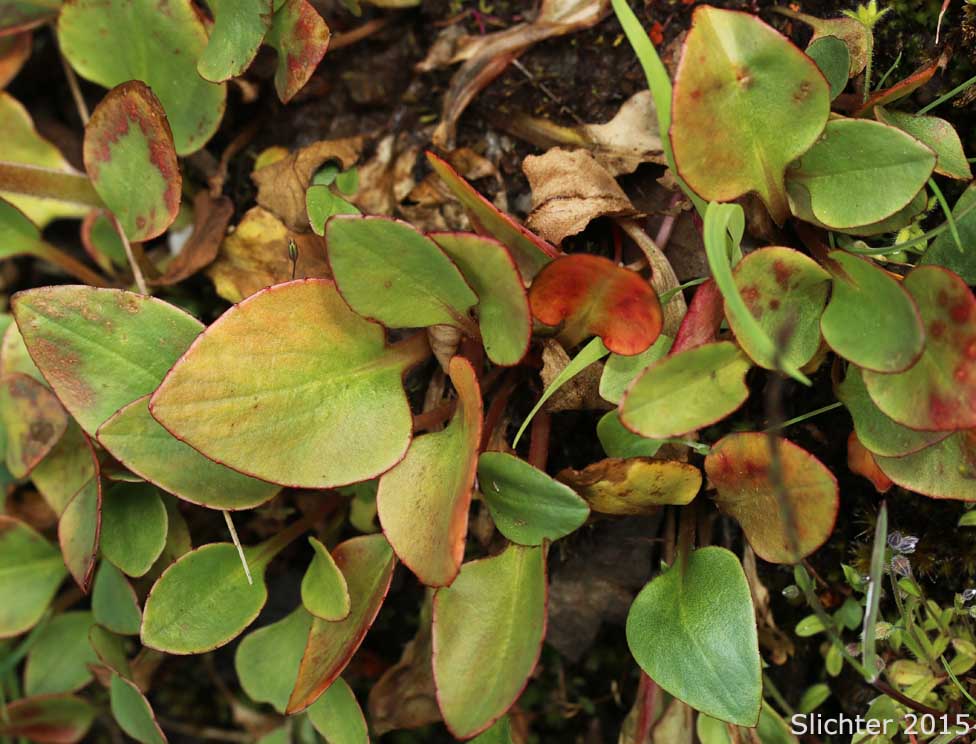 -
- 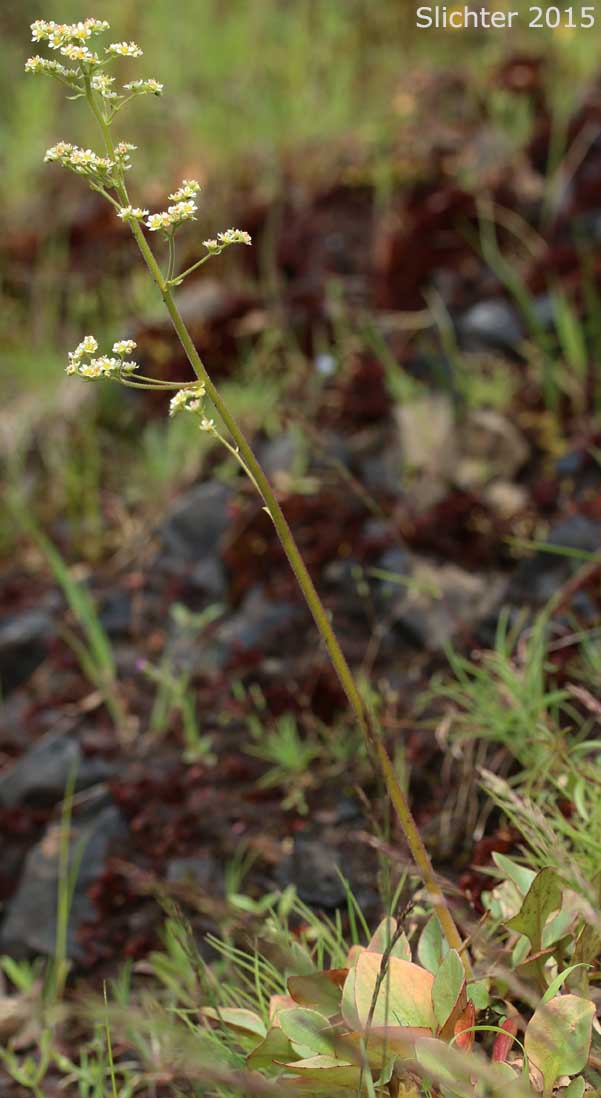 -
- 
Peak saxifrage as seen on open slopes beneath powerlines along the Starvation Creek Ridge Trail #414, Columbia River Gorge.........April 26, 2015.
 -
- 
Basal leaves of peak saxifrage (left) as seen from the Columbia Hills Natural Area Preserve.............January 19, 2015. The photo at right possibly shows peak saxifrage as seen along the Wygant Trail just east of Perham Creek, Wygant State Natural Area..........March 29, 2015.
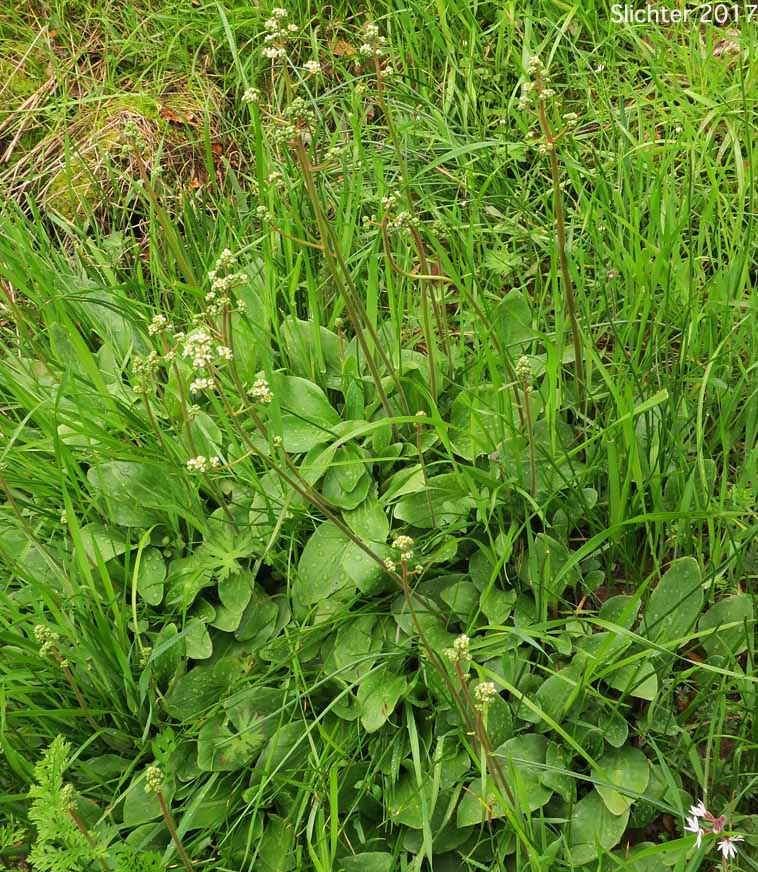 -
-  -
- 
Peak saxifrage as seen in vernally moist grassy areas at the Carson Camas Patch, Carson, WA.........April 29, 2017.
 -
- 
Peak saxifrage blooming on open, vernally moist slopes east of Eightmile Creek and above the Crawford Oaks Trailhead, Columbia Hills State Park.........February 23, 2016.
Paul Slichter
 The similar Saxifraga integrifolia var. integrifolia from Catherine Creek, Major Creek
Plateau, Columbia River Gorge, Washington.........March 30, 1991.
The similar Saxifraga integrifolia var. integrifolia from Catherine Creek, Major Creek
Plateau, Columbia River Gorge, Washington.........March 30, 1991.